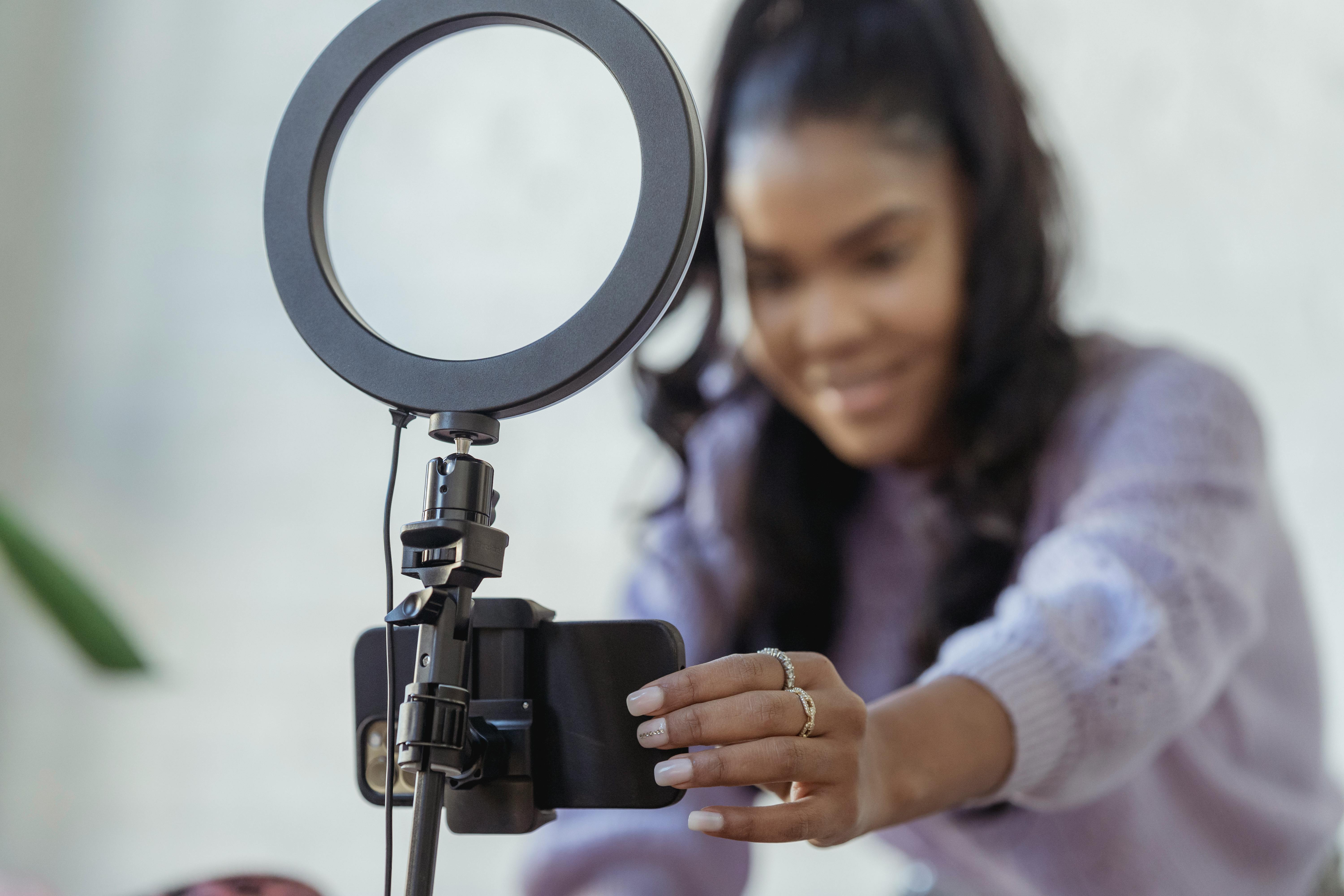Let’s be real. If you're running a reselling business, whether it's vintage tees, funky home decor, or those sneakers everyone is scrambling for, you know the hustle is real. You're sourcing, cleaning, listing, shipping—it's a lot. And then there's the marketing, which often feels like trying to shout your business name into a hurricane. You've probably thought about paid ads, maybe even considered those big-shot influencers with millions of followers, but then you look at your budget and sigh. Trust me, I've been there, staring at my inventory, wondering how to get more eyes on it without emptying my wallet.
That's where the secret sauce comes in: micro-influencers. These aren't the Kardashians of the internet; these are the folks with smaller, tighter-knit communities. Think of them as the cool kids in your high school who everyone actually listened to, not just the popular ones who ignored everyone. And here's the best part: they can get you free promotion. Yes, free. As in, it costs you zero dollars for direct promotion. Sounds too good to be true? Stick with me, because I’m about to break down exactly how it works.
Why Micro-Influencers Are Your New Best Friends
Okay, so why not just go for the mega-influencers? Well, for starters, they charge an arm and a leg. Like, seriously, more money than my entire clothing collection is probably worth. And their audience, while huge, can sometimes be a mile wide and an inch deep. It’s hard to tell if those millions of followers actually *care* about what they’re promoting or if they’re just scrolling by.
Micro-influencers, on the other hand, usually have anywhere from a few thousand to maybe 100,000 followers. But here’s the kicker: their followers are *engaged*. They aren't just faceless numbers; they're people who genuinely trust the influencer's opinions and recommendations. It’s like getting a recommendation from a friend, not a celebrity splashed on a billboard. This kind of authentic connection is gold for a reselling business.
Axios, a reliable source for news and insights, pointed out that platforms like TikTok and Instagram have become super important for reaching younger folks who are looking for advice on things like beauty and health. But it's not just beauty and health; this applies across the board for anything people are looking to buy. By teaming up with micro-influencers, small businesses can basically set up their own online stores, which totally boosts sales and makes customers stick around. (Axios) This isn't just about getting eyeballs on your stuff; it's about getting the *right* eyeballs.
The Hunt: Finding Your Dream Micro-Influencer
This isn’t like online dating where you just swipe right on everyone. You need to be picky. You're looking for someone who genuinely aligns with your brand, someone whose content style feels like a natural fit for your products.
- Define Your Niche (Again, More Specifically): Before you even start searching, get crystal clear on who you're trying to reach. Are you selling Y2K fashion? Sustainable homewares? Collectible action figures? The more specific you are, the easier it will be to find the right influencer.
- Where Do Your Customers Hang Out? If you sell vintage video games, you're probably not looking for a beauty influencer on TikTok. Are your customers on Instagram, TikTok, YouTube, Pinterest, or even a niche Facebook group? Focus your search where your potential customers are already scrolling.
- Search Like a Detective:
- Hashtags are Your Friends: Go to your preferred platform and start searching relevant hashtags. If you sell antique jewelry, try #vintagejewelry, #antiquenecklace, #estatefinds. Look for accounts that pop up repeatedly, especially those with 5k to 100k followers when you filter for "top accounts" or "people."
- "Explore" Pages and "For You" Feeds: Just spend some time browsing. The algorithms are smart; if you interact with content similar to what you sell, the platform will start showing you more. Pay attention to who is creating engaging content in your niche.
- Look at Who Your Competitors Are Tagging (Subtly): Sometimes, if a bigger brand in your niche is doing collaborations, scroll through the comments or their tagged photos. You might find micro-influencers they've worked with, or who are just super engaged with their content.
- Quality Over Quantity (Always):
- Comments, Not Just Likes: Are their posts getting genuine comments, or just a bunch of 'fire emojis' from bots? Do people ask questions or share their own experiences? That's a sign of an engaged audience.
- Authenticity is Key: Do their posts feel genuine, or do they reek of forced ads? You want someone whose personality shines through, someone whose audience trusts them because they *are* them.
- Content Quality: Do their photos look decent? Are their videos well-edited? You want someone who presents themselves professionally, even if they're not a huge media company.
My own experience with this was finding a micro-influencer for my small side hustle selling upcycled denim jackets a while back. I spent *hours* on Instagram looking through #denimupcycle and #reworkeddenim. I found this one creator, "DenimDreamer" (not her real name, obviously), who had about 20K followers. Her feed was all about sustainable fashion and DIY clothing. Every single post had like, fifty comments, and they weren’t just "cute!" – people were asking where she got her fabric, how she sewed certain stitches, and genuinely admiring her work. Her vibe was super creative and down-to-earth, exactly what my little brand was about. I knew immediately she was the one.
The Approach: Making Your Pitch Irresistible
This is where many people mess up. They send a generic, "Hey, wanna promote my stuff?" message. No, no, no. You need to make them feel special, like you chose *them* specifically for a reason (because you did!).
- Do Your Homework (And Show It): Before you even message them, spend a good 10-15 minutes going through their recent posts. Like a few, leave a thoughtful comment or two. Show you’re not just mass-messaging everyone.
- Personalize Everything: When you send that first message (usually a DM for Instagram/TikTok), make it clear you've actually looked at their content.
- Start with a compliment: "Hey [Influencer's Name]! I've been following your page for a while and absolutely love your [specific type of content, e.g., 'vintage hauls,' 'shoe reviews,' 'upcycling tutorials']. Your [mention something specific you liked about a recent post, e.g., 'styling of that retro dress,' 'insight into sneaker durability'] was so insightful!"
- Introduce Yourself & Your Business Briefly: "My name is [Your Name], and I run [Your Business Name], where I [briefly explain what you resell]."
- Explain the Connection: This is crucial. "I noticed your audience really appreciates [mention what your business offers that aligns with their audience, e.g., 'sustainable fashion,' 'unique home decor,' 'rare collectibles'], and I immediately thought of you because [explain why their specific style or niche is a perfect fit]."
- The "Free Promotion" Part – The Collaboration Offer: This is where you lay out the win-win. "I’d love to send you a [specific product, e.g., 'a custom upcycled denim jacket,' 'a vintage collectible vase'] as a gift. No strings attached, but if you genuinely love it and feel it would resonate with your awesome community, I'd be honored if you considered featuring it in your content – perhaps an unboxing, a styling video, or even just a flat lay. It would be entirely up to you and how you feel it best fits your style."
- Why "No Strings Attached" Works: It takes the pressure off. They won't feel like you're demanding a post for a free item. It builds trust. Most micro-influencers are genuinely passionate about what they do and are looking for cool, authentic products to share with their audience. If they love your product, they'll be excited to share it. And if they don't love it, well, you don't want them promoting something they aren't thrilled about anyway, right? That lack of enthusiasm would show.
- Make It Easy for Them: If they agree, get their shipping info, send the product quickly, and include a little handwritten note (if you're feeling extra thoughtful) reiterating your excitement and appreciation. Don’t bombard them with messages asking "Did you get it yet?" or "When are you posting?" Give them space to create.
The Payoff: Authentic Promotion That Drives Sales
Remember DenimDreamer? After I messaged her, she replied super fast, really excited about the jacket idea. I sent her one of my favorite designs – a faded Levi's jacket with a cool hand-painted galaxy on the back. A few days after she got it, she posted an unboxing video on her TikTok. She genuinely seemed thrilled, pointing out the details, talking about the quality. Then, a few days later, she did a "Get Ready With Me" video where she styled the jacket with a bunch of different outfits. She organically mentioned my shop name and tagged my Instagram account.
The result? My Instagram followers jumped by about 20% in two days. I had like, ten DMs asking about the jacket she wore, and three sales directly attributed to her post within the week. It was incredible. This wasn't some flashy, overproduced ad; it was a real person, talking about a real product she genuinely liked. That’s the power of micro-influencers.
According to the research, "Engaging in authentic partnerships, such as product reviews or unboxing videos, can build trust and drive sales. Consistent and genuine content creation is key to maintaining a strong relationship with the influencer's audience." This isn't just theory; it's exactly what played out for me.
Keeping Track: Measuring Your Success
How do you know if this whole micro-influencer thing is actually working? You can't just cross your fingers and hope. You need to keep an eye on things.
- Monitor Your Social Media:
- Follower Growth: Keep a tally of your new followers, especially right after an influencer posts. Is there a noticeable bump?
- Mentions/Tags: Most platforms have a notification area where you can see when other accounts mention or tag you. Keep an eye out for posts from your chosen influencer.
- Engagement on Your Posts: Are more people liking, commenting, and sharing your content? This might be a ripple effect from the traffic the influencer sent your way.
- Website/Shop Analytics: If you have an online store (which, if you're reselling, you probably do), dive into your analytics.
- Referral Traffic: Check your traffic sources. Did a bunch of new visitors come from Instagram or TikTok around the time the influencer posted? This is a strong indicator.
- Conversion Rates: Are those new visitors actually buying things? This is the ultimate metric. Did sales go up after the collaboration?
- Discount Codes (Optional but Smart): If you want to get super precise, you can give your influencer a unique discount code (e.g., "DENIMDREAMER10" for 10% off). This makes it easy to track exactly how many sales came directly from their audience. I didn't do this with DenimDreamer, but looking back, I wish I had. It just makes the tracking foolproof.
- Direct Messages and Comments: Pay attention to direct messages or comments on your posts asking about products. Often, people will say, "I saw this on [influencer's name]'s page!" That's a clear win.
Measurement can be as simple as a spreadsheet where you track when an influencer posts, what product they featured, and then note any spikes in traffic or sales in the days following. The goal is to "track engagement metrics, such as likes, shares, and comments," and to monitor "referral traffic and conversion rates from influencer-promoted content" to understand your return on investment. (Axios) This isn't just about feeling good; it's about knowing what works so you can repeat it.
The Bumpy Parts: Challenges and How to Handle Them
It's not always sunshine and rainbows. Sometimes, things don't go exactly as planned.
- They Don't Post: Yep, it happens. Remember, you sent it "no strings attached." Don't be a pest. If a reasonable amount of time has passed (say, 3-4 weeks) and you haven't seen anything, you can send a polite, casual follow-up message: "Hey [Influencer's Name], just wanted to check in and make sure the [product] arrived safely! Hope you're enjoying it." That's it. No guilt-tripping. Most of the time, they either forgot, got busy, or it just wasn't a good fit for their content plan. Move on. There are plenty of other fish in the sea.
- Audience Mismatch: This usually happens if you didn't do your homework well enough. You sent an item to someone whose audience just isn't interested in what you're selling. This is why that initial research phase is so critical. "It's essential to ensure that their audience demographics align with the reseller's target market." (Axios) A dud collaboration isn't a failure; it's a learning experience. Refine your search criteria for the next one.
- Authenticity Slip-Ups: It's rare with micro-influencers, but sometimes you might see them promoting something you know isn't a good fit for their brand, or rushing through a promotion. This is why "maintaining transparency and authenticity in promotional content is crucial to uphold brand credibility." (Axios) If you see this happening, you might think twice before collaborating with them again. You want someone who truly values their audience's trust, just like you value your customers' trust.
The Future is Micro
The world of social media is always changing, but one thing is clear: people are tired of perfectly curated, overly Photoshopped content from celebrities who seem out of touch. They want real, relatable people. And that's exactly what micro-influencers offer.
"As social media platforms evolve, the role of micro-influencers in marketing strategies is expected to grow." (Axios) So, this isn't just a fleeting trend; it's a fundamental shift in how businesses connect with their customers. Resellers, with their unique and often one-of-a-kind inventory, are perfectly positioned to leverage this. Your products have stories, personality, and often a unique appeal that resonates deeply with niche audiences.
My experience with DenimDreamer was just one success story, but it proved to me that this method works. It’s not about paying thousands for a single post; it’s about strategic, thoughtful partnerships born from genuine connection. It's about finding those diamonds in the rough on social media who, with a simple shout-out, can send a wave of truly interested customers your way.
So, stop yelling into the hurricane. Start finding your micro-influencer squad. It might just be the most effective, and certainly the most budget-friendly, marketing strategy you'll ever try for your reselling business. Go forth, find your people, and get that free promotion!



